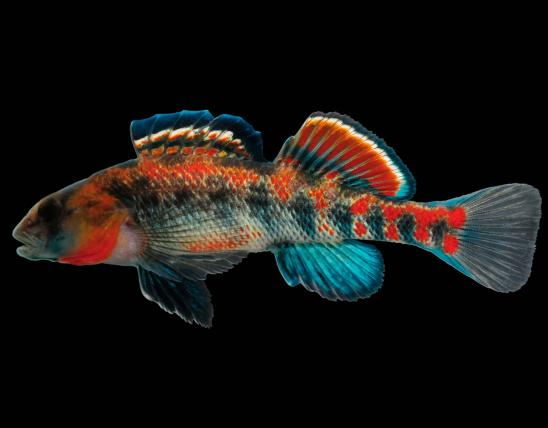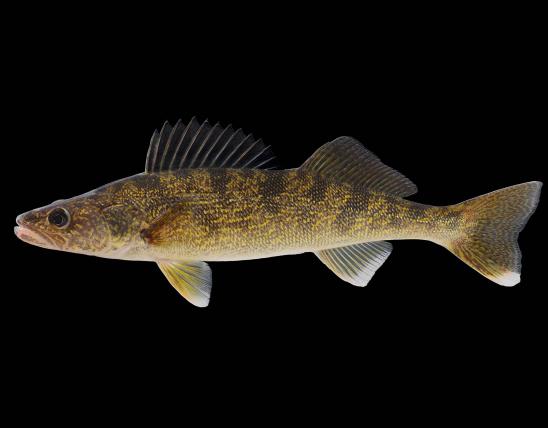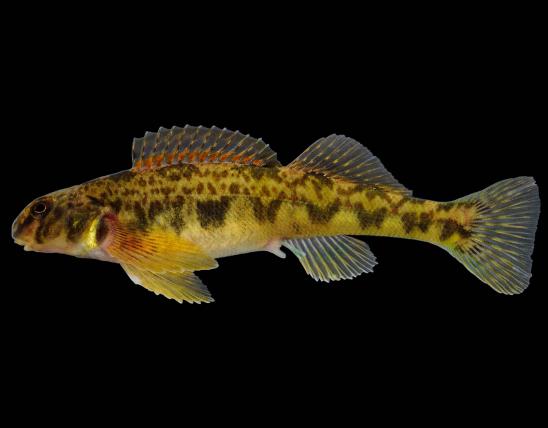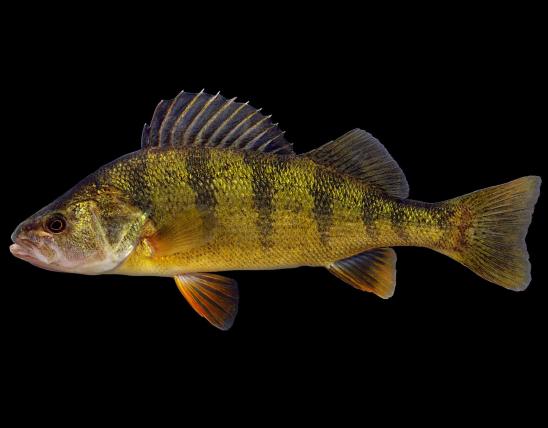
The logperch is the largest darter in Missouri. It is readily separated from other Missouri darters by the following characters: The mouth is overhung by a distinctly conical snout; the color pattern has 15 to 20 narrow, vertical dark bars on a light background, with the bars alternating in length, with every other bar extending only about to the lateral line, while the other alternating bars extend nearly to the belly. The back and sides are pale yellowish olive with numerous narrow brown bars; the belly is creamy white. There is usually a dusky bar beneath the eye and a small black spot at the base of the tail fin.
Total length: 4 to 6 inches; maximum about 7 inches.

Occur throughout Ozarks and at scattered localities elsewhere. Most abundant along the border between the Ozark and Prairie faunal regions. It is also one of the few Missouri darters to persist in impoundments.
Habitat and Conservation
Deep riffles and silt-free pools in small- to medium-sized rivers, and along windswept gravel shorelines in reservoirs. Avoids headwater creeks but otherwise occurs in streams of all sizes, achieving its greatest abundance in small- to medium-sized rivers. Avoids streams that are continuously turbid or excessively silty or that lack well-defined gravelly riffles.
Food
Midges, small crayfish, and small aquatic worms. Uses its distinctive snout to pry up rocks in search of prey. Rocks several times larger than the darter's head are overturned with ease, after which the logperch carefully examines the undersurface of the rock and picks off the small invertebrates exposed.
Status
Although this is the largest darter in Missouri, it does not achieve the size of its other perch-family relatives ― the walleye, sauger, and yellow perch ― and is thus not a game fish.
Life Cycle
Lifespan can be 3 or 4 years. Logperch are most active in daytime. Spawning is in April and May. Males gather in loose aggregations of a few to a hundred individuals on clean, gravelly or sandy riffles. Males don't establish territories but rather range over the entire spawning ground. Females congregate in deeper water nearby, entering the aggregations of males only when ready to spawn.




























